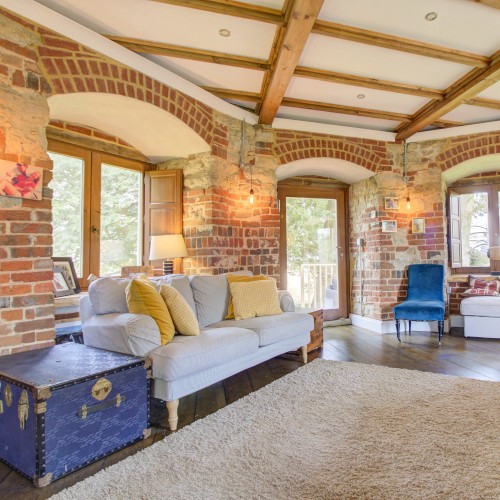Dinton Castle has a Grade II* listing which made the restoration process a labour of love. Here’s our advice on how to restore a listed building, whether it’s a cottage or a castle:
- Take your time: Live with the house and the space as it is for a few seasons before making big decisions. You may find you totally change your plans.
- Be aware of red tape: If your property is listed or in a conservation area there will be legal restrictions on what you can and cannot do. Your garden will probably be listed too, including boundary walls, outbuildings and trees. And remember this: before buying a listed building, ensure the correct building consent was given on any works carried out by previous owners. If unapproved works were done before your ownership, the buck stops with you.
- Go in with your eyes wide open: Extending a house more than 25% is often a bad idea. If you need considerably more space than a property offers, think very carefully before investing. It may have been love at first sight, but perhaps the house isn’t right for you.
- Tackle one room at a time: Employing carpenters and plasterers on small projects gives you the chance to try them out and find the right one before committing yourself to a huge financial outlay.
- Source reclaimed materials whenever possible. Paul McCartney reputedly loves a rummage in a skip and they can be a fabulous source of old window glass and wood, especially if you see one sitting outside an old property. You could also place an ad online, or check out Ebay along with local reclamation yards.
- Don't go strip-back crazy: Later additions can add to the character and history of a listed property as much as original details. Retaining a 1920s fireplace in what was originally a Victorian chimneybreast is a lot more authentic than a replacement reproduction Victorian grate.
- Perfection is over-rated: Don't replace what you can repair. An honest and visible repair is far superior to a fake reproduction and adds to the charm and character of your gracefully aging home.
- Listed homes don’t have a damp-course: Modern building and decorating techniques will trap moisture in the walls of a listed building. Use lime mortar instead of cement to make sure the building can breathe.
- Learn as much as you can. Research the local traditions of your area and find out as much as you can about local building materials, styles, and building types. If you see a well restored property, make contact with the owners. If they’ve been through the renovation process themselves they will be a great source of local information and advice.
- Prepare to compromise. Old buildings weren't designed for modern living. Space and light are wonderful, but you may have to compromise on them if you want to enjoy the benefits of a listed cottage or manor house.
There are plenty of professional organisations you can go to for help and advice if you want to find out how to restore a listed building. The Conservation Office, Historic England and The Society for the Protection of Ancient Buildings are all fabulous resources and great as a first port of call. If you are looking to buy a period property, have a look at the Michael Graham homes to buy or to rent by clicking the Property Search button now. The Manor House and cottages below all have a Grade II listing.
